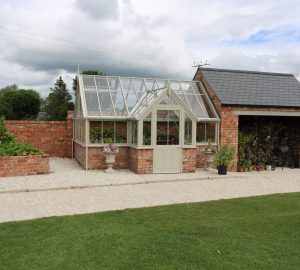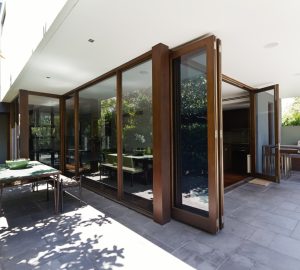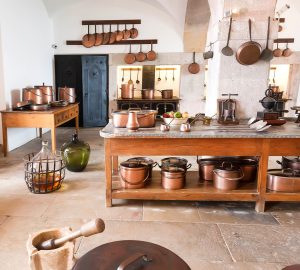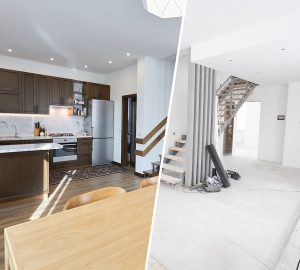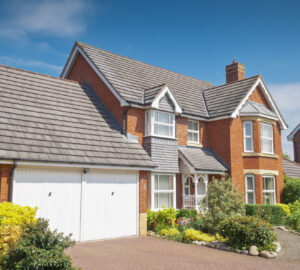Engineered wood is a flooring option growing in popularity in homes throughout the country.
It consists of a thin layer of hardwood atop several layers of plywood or fiberboard. By combining the aesthetic appeal of hardwood with the value and strength of several composed underlayers, engineered wood products provide homeowners with numerous advantages over other flooring options such as tile, laminate, and traditional hardwood.
Moisture Resistance
Because the layers beneath the hardwood in a plank of engineered wood run perpendicular to one another, a piece of engineered wood flooring is stronger and significantly more resistant to moisture. Unlike hardwood, where all the fibers run parallel to the wood’s grain, engineered wood is less prone to warping or expanding when exposed to water. Because of this quality, engineered wood flooring is often preferred over hardwood in below grade installations, over concrete, or in high-moisture areas like kitchens, bathrooms, and high-traffic entryways.
Versatile Installation
Engineered wood flooring is one of the most versatile styles of flooring when it comes to installation. Some engineered wood flooring systems are designed as floating floors that click into place, similar to most laminate flooring on the market today. These clickable engineered wood flooring systems often appeal to homeowners looking to install their flooring themselves. Other engineered hardwood can be nailed down like traditional hardwood planks. Engineered wood floors can also be installed over almost any existing flooring, including concrete, wood, tile, and vinyl. Because of this versatility, engineered hardwood is again often favored over other flooring options in older homes or in circumstances where installation is challenging.
More Environmentally Friendly
Not only does engineered wood flooring use less “real” hardwood, the manufacturing process that creates the planks involves a slicing technique that differs from using a saw. Whereas the process of traditional hardwood floor manufacturing creates sawdust, engineered hardwood flooring produces little to none. Sawdust is wasted wood and considered environmentally unfriendly. By choosing engineered wood products for your home, you are supporting a system that does not create this waste. Many hardwoods are exotic and rare, making it especially important to conserve these important natural resources.
Built to Last
Engineered wood flooring has a lot of the strength and durability of laminate flooring. However, unlike laminate floors, engineered wood flooring can also usually withstand a few refinishes. This quality, similar to traditional hardwood flooring, extends the life of your floor and even allows some opportunity to alter the look of your home without re-laying a whole new flooring system. Because the quality and thickness of engineered wood does vary between brands, it is important to be certain that your style of floor is thick enough to withstand sanding and refinishing before undertaking such a project. A flooring professional should be able to help you determine if your engineered wood floor is a candidate for refinishing and would also be able to undertake the project safely without sanding too far and exposing the underlayers.
Easy to Maintain
The same strength and durability that helps engineered wood flooring resist moisture also helps keep it looking new and fresh longer. Whereas traditional hardwood often requires re-sealing, re-staining, or sanding to eliminate scratches and dents, the solid nature of engineered wood helps avoid these problems. This quality of engineered wood flooring can save homeowners considerable time and money that would otherwise need to be devoted to flooring upkeep and maintenance.
Resale Value
In today’s market, there is virtually no difference in the value of a home that has engineered wood floors and one that has traditional hardwood floors. Because an engineered wood floor also often requires less maintenance, it can quickly become the more economical option for homeowners who are considering a home’s resale value when planning their renovations.
Whether you are looking to makeover one room or your entire house, choosing new flooring can be exciting. The opportunity to design a new space is one of the more enjoyable parts of being a homeowner. There are many different flooring options on the market today, and it is important to be informed about the advantages of each. Engineered wood flooring products have a lot to offer today’s consumer but they are only one of many choices. Taking the time to review all of your options will help to ensure you are happy with the finished product for many years to come.


